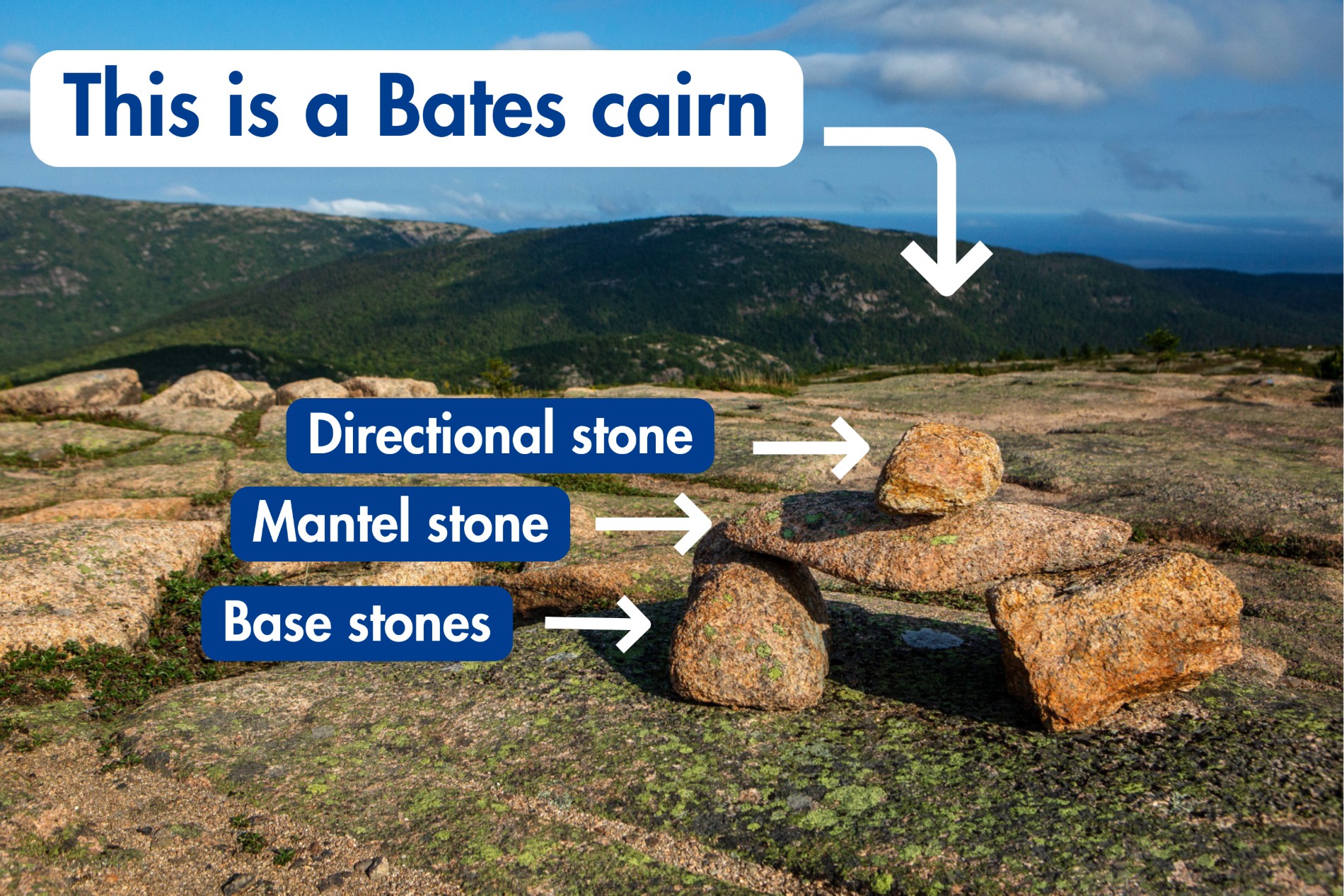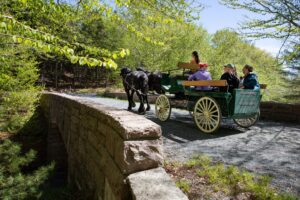Due to the government shutdown, Acadia remains mostly open, while operating with significantly reduced staff and visitor services. A skeleton crew of employees who are deemed essential to public health and safety remain on duty at Acadia without pay to take care of visitors who access the trails, roads, and carriage roads.
There is no park staff at Hulls Cove Visitor Center or Acadia Gateway Center to ask questions about your visit, so take time to research and plan your trip – and know what you’re getting into – before heading into the park.
While some law enforcement rangers and search and rescue personnel are on hand in case of emergencies, this is an extremely busy time in the park, and help might take hours.
Pack Your Patience (Have a Plan B and a Plan C)
There are a lot of folks here to enjoy the park, just like you. Be patient on the roads, in the parking lots, and on the trails. Getting around is going to take longer. Also have a plan B and a plan C ready, should your first choice destination already be full and crowded.
Parking Will Be Limited
With high numbers of visitors this time of year, expect parking to be hard to find, especially at popular park locations like Jordan Pond House and Sand Beach. Please only park in designated parking spots or marked sections with permitted right lane parking on the auto road. If the lot at a particular location is full, move on. Please do not park on the grass or in non-designated areas. (We highly recommend taking the Island Explorer instead! See more below.)
Take the Island Explorer Fare-Free Bus (runs through Monday, Oct. 13)
 Leave your car parked at Hulls Cove, the new Acadia Gateway Center, in town, or at your place of lodging and ride the fare-free Island Explorer bus, which connects the park with the surrounding communities on Mount Desert Island and the Schoodic Peninsula. The Island Explorer continues to operate on its fall schedule through October 13, 2025. It takes the pressure off parking, reduces traffic congestion and emissions within the park, and lets you relax and enjoy your exploring. Check the Island Explorer schedule and route finder.
Leave your car parked at Hulls Cove, the new Acadia Gateway Center, in town, or at your place of lodging and ride the fare-free Island Explorer bus, which connects the park with the surrounding communities on Mount Desert Island and the Schoodic Peninsula. The Island Explorer continues to operate on its fall schedule through October 13, 2025. It takes the pressure off parking, reduces traffic congestion and emissions within the park, and lets you relax and enjoy your exploring. Check the Island Explorer schedule and route finder.
Park Passes During the Shutdown
During the government shutdown, the park is unable to sell park passes or collect fees. This puts significant park revenue, needed for next year’s operations, at risk. We know many visitors want to support the park by purchasing a park pass – but simply have no way of doing so right now. In lieu of a park entrance pass, visitors can support Acadia by donating the value of an entrance fee.
Cadillac Mountain – Reservations Still Required
Reservations are still required to drive your car up the Cadillac Mountain Road. Vehicle reservations cost $6. They are sold online in advance at Recreation.gov. They are not available for purchase at the park. No reservation is required to bike up the auto road or hike up the trails to the summit.

Beehive and Precipice Will Likely Be Packed
They’re incredible trails with ledge views and ladders to climb. They’re also very popular, which means you can expect lines and congestion on those trails in particular. Consider another trail instead. If you do head to Precipice or Beehive, go early and/or pack your patience.
Also note: The park encourages one-way traffic for both safety reasons (it’s easier and safer to go up a ladder than down it) as well as reducing congestion on the trails.
Know Your Hike & Trails with Ladders

You’re headed out for a hike! So fun! Do you know which hike you’re doing, how long it’ll take, how strenuous it’ll be and/or whether your fear of heights and ledges will stop you in your tracks halfway through? Do a little recon before you hit the trails. If you’re not a fan of climbing iron rungs and ladders, note these trails have them: Beehive Trail, Precipice Trail, Beech Cliffs Trail, and Ladder Trail to Dorr Mountain. Some other trails with ladders or rungs are Jordan Cliffs and the Perpendicular Trail up Mansell Mountain.
Slow Your Roll on the Carriage Roads
Acadia’s carriage roads are multi-use, meaning they welcome walkers and hikers, bike riders, and horseback riders and horse-drawn carriages. Be mindful of all the other visitors and go slowly – it gives you more time to enjoy the scenery while helping prevent injuries or startling others, including horses. Note: Everyone yields to horses and bicyclists yield to everyone.
Be Prepared
Some basic preparation can mean the difference between a splendid and memorable day in Acadia versus a stressful and cold hike that culminates in a twisted ankle.
Sturdy hiking boots/shoes: The number one reason for search and rescue (SAR) in Acadia National Park is lower-leg injuries from falls, slips, and trips on the rocky, root-covered, and often wet trails. Wear sturdy hiking boots or hiking shoes with good traction, and mind any wet rock you encounter.
Paper map: Trail apps are a great way to scout trails in advance, check distances and elevation gain, and glean intel from fellow hikers. But cell service in Acadia can be spotty, which means your cell phone might be less than helpful should you get turned around in the park. Pick up a paper map of the park and carry that in your backpack as well.
Water and snacks: You came all this way to revel in Acadia’s wonders – why risk getting “hangry” mid-way through the day? Pack some snacks and water. It’s a treat to enjoy a snack in a scenic spot, plus it’ll spare you from the thirsty and starving crabbiness that creeps up when you’re least expecting it.
 Join
Join Donate
Donate Acadia National Park
Acadia National Park
 Leave your car parked at Hulls Cove, the new Acadia Gateway Center, in town, or at your place of lodging and ride the
Leave your car parked at Hulls Cove, the new Acadia Gateway Center, in town, or at your place of lodging and ride the 

 Staying on trail is a wise environmental approach. It keeps the impact from foot traffic to a confined space – allowing the surrounding vegetation to thrive.
Staying on trail is a wise environmental approach. It keeps the impact from foot traffic to a confined space – allowing the surrounding vegetation to thrive.



